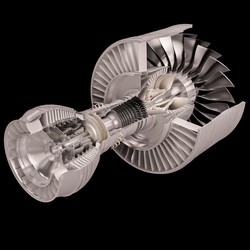Lean and clean – Better models for combustor design
Lean-burn combustion systems provide major benefits by reducing nitrogen oxides (NOx) emissions. However, emissions of carbon monoxide, unburned hydrocarbons and soot limit the operation of the combustor under different conditions. Thus, engineers are unable to reliably predict the type and quantity of emissions from combustors, making it difficult to create a greener and more cost-effective design. This challenge was addressed by the project DREAMCODE (Development of reliable emission and atomization models for combustor design), which developed computational methods for use in the design of low-emission combustors. Project partners first developed and refined detailed reaction mechanisms for jet fuel surrogates, describing the complicated processes behind fuel oxidation and emission formation. The new mechanism was found to work well for a wide range of test cases, with significant improvements in predictions of NOx and soot precursors. Researchers also built multivariate soot models, which are crucial for describing the complex physical and chemical phenomena involved in soot formation, and improved statistical models. In addition, reduced chemistry methods were developed to include detailed chemistry models in computational fluid dynamics calculations. The team created spray break-up models for predicting the distribution of fuel in the combustor, which has a dramatic effect on emissions. Finally, detailed smooth particle hydrodynamics simulations were performed, enabling scientists to understand fuel break-up. These new insights were used to develop a spray model that predicted the distribution size of droplets. DREAMCODE outcomes will enable aero engine developers to create an engine with a combustion system with lower emission levels and to reduce the number of expensive and time-consuming experimental tests. By gaining a competitive edge over global competitors, the European aero engine industry will help to create jobs and benefit the EU economy by enabling new green technology solutions to come to market more quickly.







